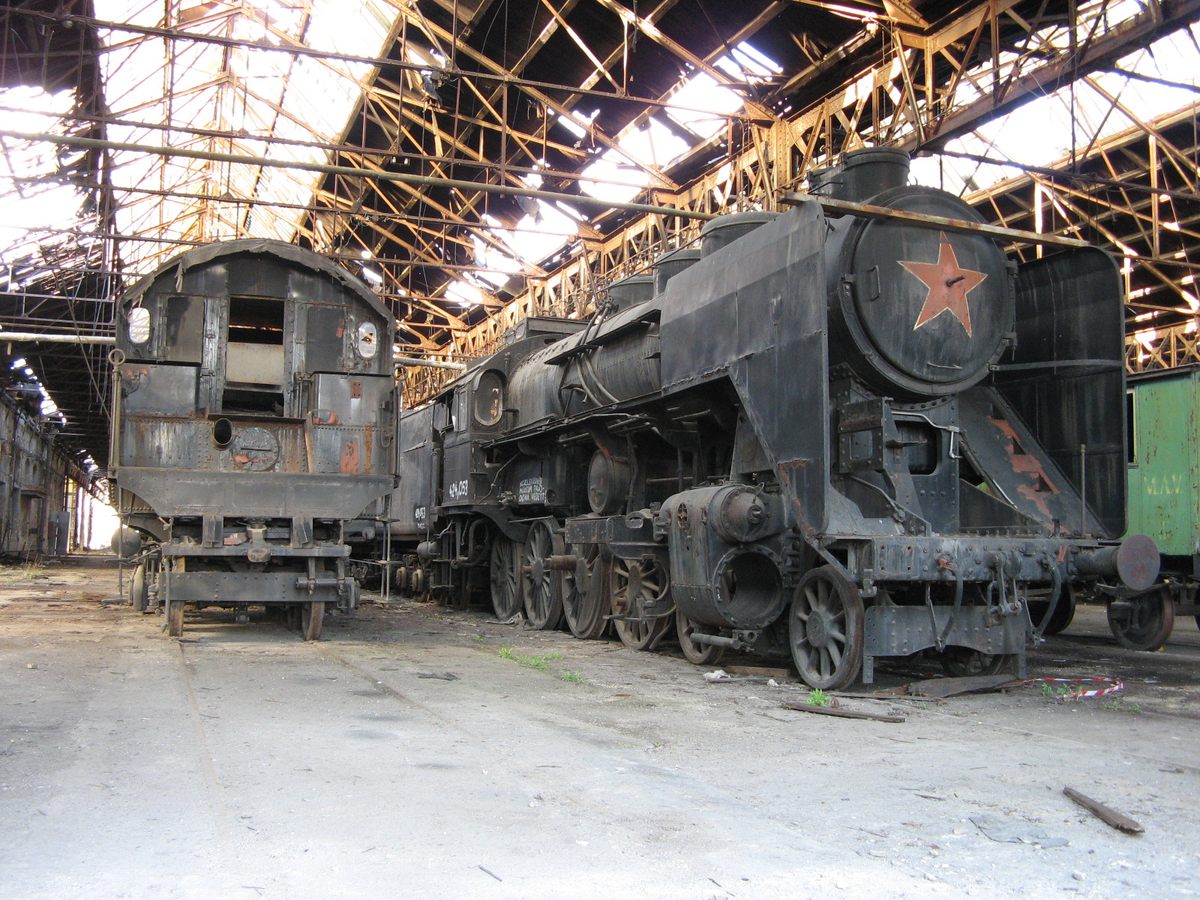Just outside Budapest is the Istvántelki főműhely, more eerily known as the “Red Star Train Graveyard.” This vast area is the final resting place for over a hundred old locomotives and train cars, each a rusty relic from the past. Some of these historic giants are sheltered in crumbling depots, while others are left to decay in open fields. Among them are a few rare and valuable train engines, and some cars with a heartbreaking history—they are believed to have once transported prisoners to Auschwitz during the Holocaust. The Red Star Train Graveyard quietly tells the story of both the wonders and the dark times in train history.


Built at the start of the 20th century as a repair yard for Hungary’s national railway, the Istvántelki főműhely now tells a story of neglect and history. While a few parts in the southern yard are still in use, most of this once-busy site is abandoned.
The yard features two large depots, several smaller sheds, and open areas, all filled with locomotives and railcars. These range from ancient relics to more recent models from Hungary’s Soviet era. Many of these trains were meant to be repaired and eventually displayed at the Budapest Railway Museum. However, they never made it there and were left to weather the elements in the train yard.


For train enthusiasts, the Red Star Train Graveyard has a few gems that can make their hearts race. Among the rusting relics are several Hungarian MAV 424 steam engines, each weighing 137 tons. Even without the red star that gave the graveyard its nickname, they still inspire awe. Another notable piece is an engine from the MAV 301 series, dating back to 1911-1914. This engine is a rare find, with only a few of its kind still in existence today.


The Red Star Train Graveyard also holds more recent artifacts from the Soviet era, including engines and cars where you can still find rail tickets from the 1960s. This unique site offers a fascinating alternative to the usual Budapest tourist spots, appealing not just to train enthusiasts but to anyone interested in history. As nature slowly reclaims the area, the locomotives and railcars are gradually being covered by overgrown plants. Soon, these historical machines might be completely hidden, making now the perfect time to explore this forgotten piece of railway history.












